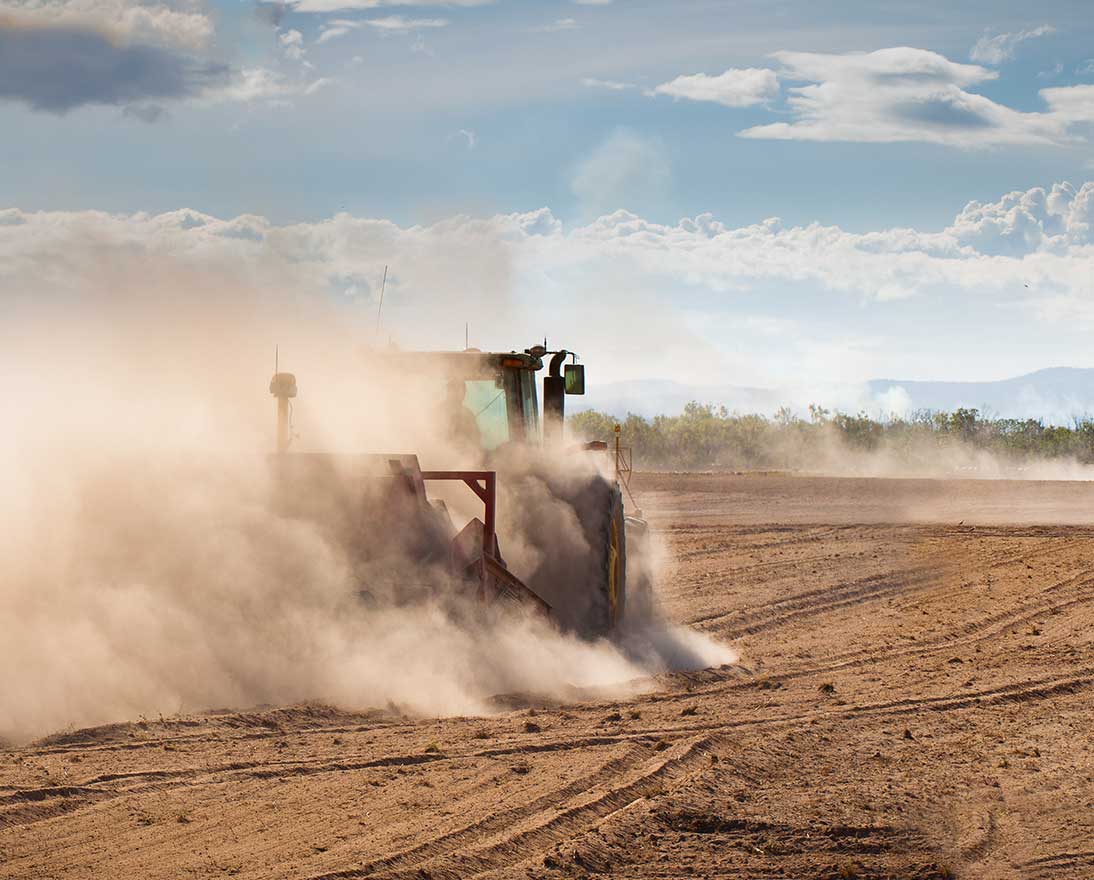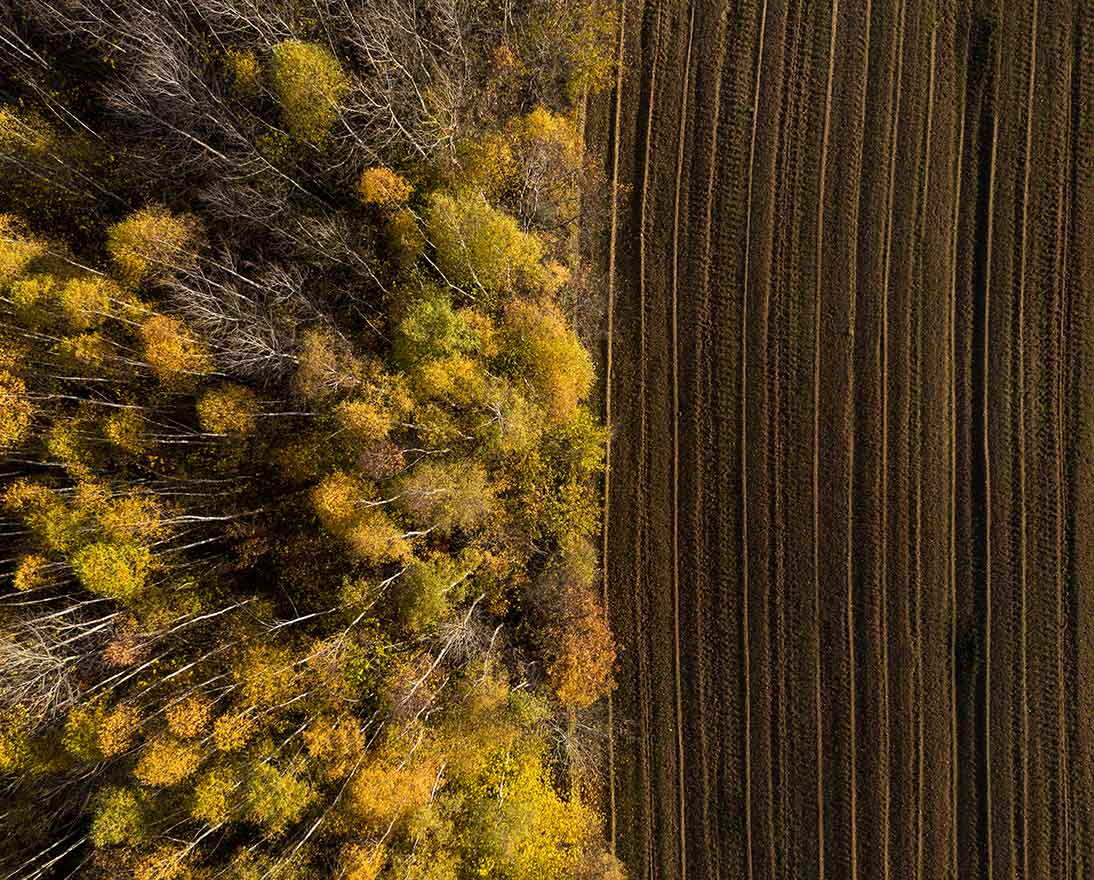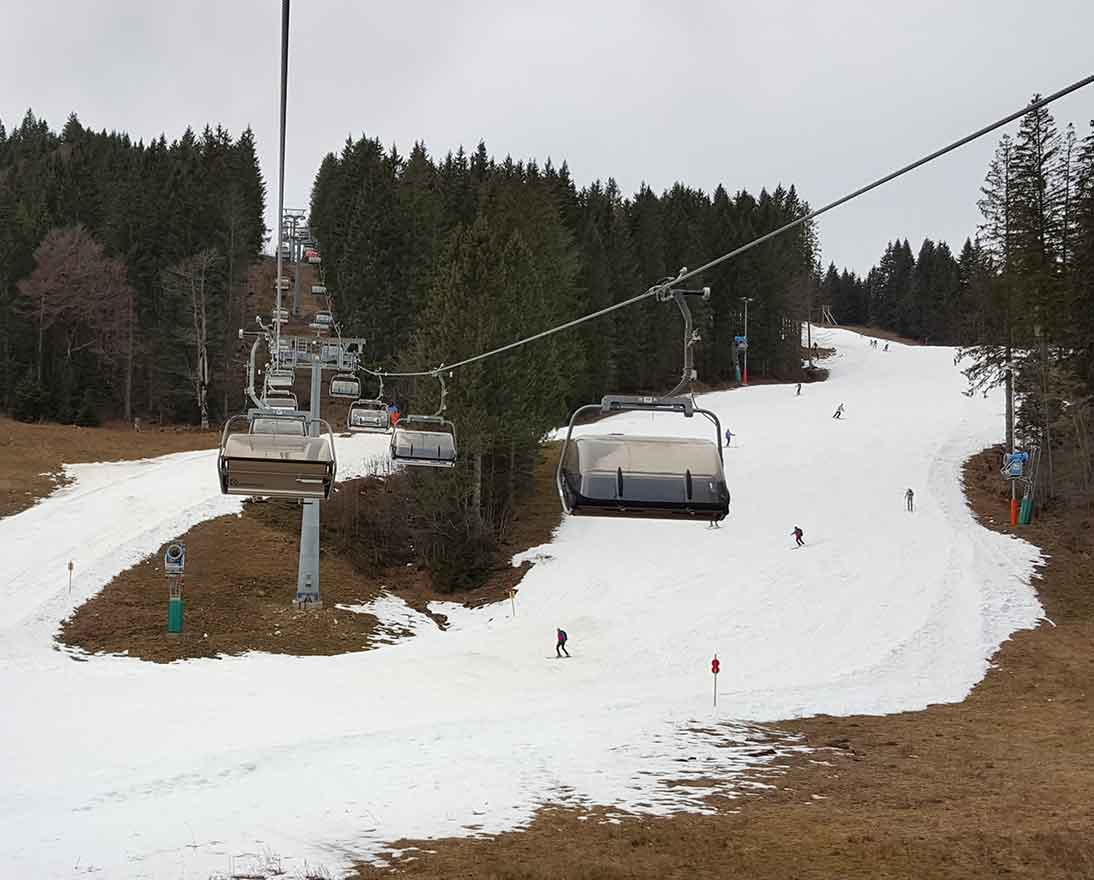Climate change and biodiversity: twin challenges for today’s business leaders
Climate resilienceArticleNovember 16, 20217 min read
Climate change and biodiversity loss are intricately connected. How does one reinforce the other, and what can we do to stop the cycle?
We’re in the midst of the sixth mass extinction, argue many scientists. Mystery surrounds the causes of the first five extinctions with volcanic eruptions, asteroid impacts, sea level rise, and even sudden releases of greenhouse gases believed to be the most likely culprits. But the sixth? There’s less mystery about that. That’s down to us. And it’s being compounded by another human-made problem: climate change.
Today, around 1 million animal and plant species are threatened with extinction, many within decades, more than ever before in human history. And it’s a problem we should all worry about.
The term biodiversity refers to the mix of organic life that exists within an ecosystem. It includes animals, insects, plants, and even bacteria and fungi. If we take the Amazon rainforest as an example ecosystem, its rich biodiversity includes innumerable species, from humans and other large mammals, to reptiles, amphibians and fish, as well as fauna ranging from huge trees to the tiniest plant life, alongside fungus and soil bacteria.
Biodiversity is important for several reasons. Every organism in an ecosystem plays its part in that system, meaning they are interdependent. Trees rely on birds eating and digesting their fruit to spread their seeds; bacteria in the soil break down dead plant and animal matter, and the extracted nutrients feed other plants. Once one part of this network of organisms is lost, it has knock-on effects for the rest of the ecosystem, which will become less resilient and more vulnerable to disruptions, like climate change.
Biodiversity and climate change are intricately linked
The changing climate is driving biodiversity loss. Temperature rises are changing habitats much more quickly than animals can adapt. When some organisms can no longer survive in an area, the other living things that relied on them start to struggle. Polar bears, for example, are increasingly threatened by climate change, but countless other species are under threat – not least bee populations which are vital to the agricultural sector.
It’s vital to understand that this is not a one-way process. Not only does climate change escalate biodiversity loss, but biodiversity loss can drive climate change, creating a vicious circle.
We all know that plants act as the planet’s lungs, taking in CO2 and releasing oxygen. If trees are lost to deforestation, they will not only release huge amounts of carbon into the atmosphere, but we lose their ability to reduce emissions by soaking up carbon. A UN report found that by reducing forest degradation, we could lower greenhouse gas emissions by up to 5.8 gigatons of CO2 equivalent every year.
A similar vicious cycle is happening in our seas. In Alaska, for example, overfishing of pollock has led to a reduced sea lion population, for whom pollock is a primary food source. This means that killer whales, who would normally feed on sea lions, have begun preying on sea otters, who in turn would normally eat sea urchins. The rise in sea urchins has caused a depletion in sea kelp – a seaweed which normally acts as a carbon sink (absorbing more CO2 than it releases into the atmosphere).
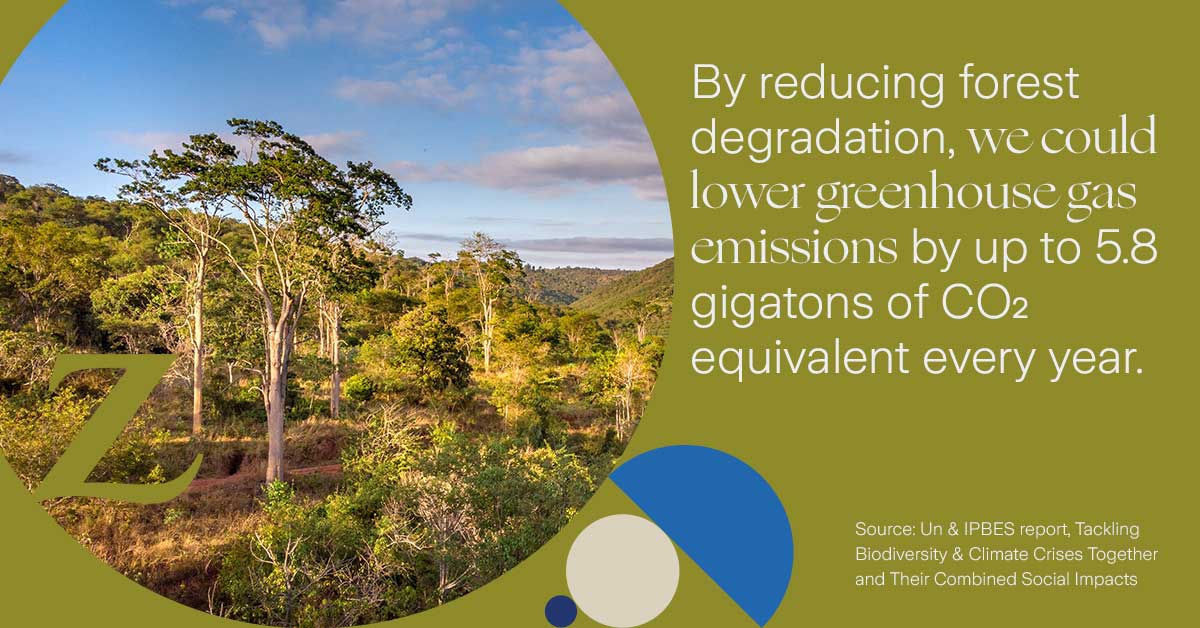
Why should we care about climate biodiversity loss?
Beyond our desire to nurture a healthy planet, biodiversity is important to humans. Healthy ecosystems are necessary for human wellbeing. The benefits to humans of functioning ecosystems with strong biodiversity are known as ecosystem services. They include things like clean water, sites for recreation, oxygen production and growth of medicinal plants. When biodiversity is reduced in any given ecosystem, that ecosystem stops working efficiently and the people and businesses that rely on its services suffer.
Daniel Eherer, Risk Manager in Sustainability and Emerging Risk at Zurich Insurance Group explains, “Nature performs a lot of services for us. It provides pollinators, clean water, and purifies the air from pollutants. At the same time, ecosystems, such as wetlands, remove great amounts of CO2 from the atmosphere. And this is where it connects with climate change because these ecosystems store this carbon. So, when they’re damaged, the risk is that they release carbon and climate change is accelerated .”
And it’s not just about what we lose from the dual impacts of biodiversity loss and climate change, but the new problems that it can cause. Zoonotic diseases – diseases that pass from animals to humans – are more likely to arise as animals are forced out of their usual habitats and into human communities, along with the diseases they carry. As we’ve seen with SARS and COVID-19 – viruses originally found in animals – the impact can be felt on a global scale, affecting lives and economies.
The impacts of biodiversity depletion are felt across industries. Agriculture relies on pollinators like bees and other insects, but our use of pesticides has depleted bee populations across the world. The pharmaceutical industry is still uncovering new treatments sourced from nature, which, if they disappear, will remain undiscovered forever. Similarly, in food production, wild versions of food crops might have the right genes to survive our changing climate.
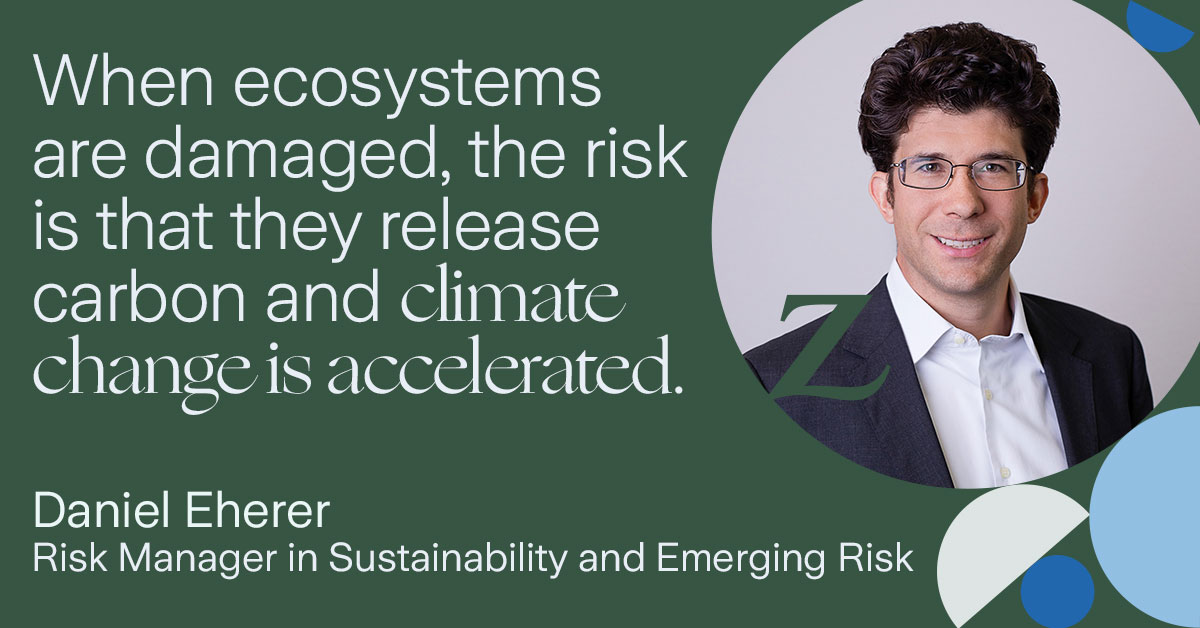
What can we do?
Actions we take to reduce climate change should help maintain biodiversity. Reducing emissions by moving to ‘green’ energy sources, and investing in new technologies like carbon capture, if done on a large scale, should help us reduce some of the environmental impacts of human activity.
Businesses can look now at their processes and policies to make sure they are increasingly supportive of biodiversity. Businesses can allocate a role within the company to review nature-based risks and to integrate biodiversity considerations into environmental risk management. Education should also be provided within companies on the link between nature and the way the businesses functions.
Leaders in every business sector should take time to review the ways in which a company’s functions and its value chain impact upon the ecosystems in which they operate, then develop an action plan to mitigate any negative effects. This may necessitate the development of metrics that can help the business measure impact, and successes in addressing those impacts.
It’s also vital that in any discussion and planning on sustainability targets, biodiversity is discussed alongside climate change as a dual challenge. For example, if action to reduce carbon emissions leads to unintended negative consequences for biodiversity, it will negate the good work undertaken by businesses seeking to reduce their impact on the climate crisis.
Businesses also need to be aware of not just their practices, but those of the companies they work with. Businesses will be at greater risk of reputational damage if they are seen to be causing harm to the environment anywhere in their value chain, without taking adequate steps to mitigate or eliminate that harm.
Maintaining biodiversity is a win for people and the planet
Flourishing biodiversity means a healthier climate, and a healthier climate means protected biodiversity. Humans are part of biodiverse ecosystems, too, and the better we get at living harmoniously within these networks, the better the future will be for the climate, for us, and for the ecosystems in which we operate.

